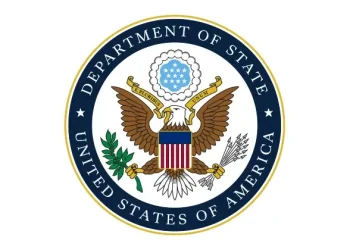In a significant move to bolster national security, the Department of Homeland Security (DHS), led by President Trump and Secretary Kristi Noem, has implemented sweeping changes in border security, immigration enforcement, disaster relief, cybersecurity, and transportation security within six months.
These efforts aim to address perceived immigration crises and enhance U.S. resilience against transnational threats.
Border Security Enhancements
The DHS has declared a national emergency at the southern border, reinstating the “Remain in Mexico” policy and ending catch-and-release practices.
These measures have resulted in a 93% reduction in daily border encounters. The administration’s focus on securing the border is evident through increased funding and personnel for enforcement agencies.
Additionally, over 300,000 illegal aliens have been removed in 2025 alone, with 70% identified as criminal illegal aliens. This aggressive approach underscores the administration’s commitment to reducing illegal immigration and enhancing public safety.
Immigration Policy Reforms
The administration has introduced legal immigration reforms aimed at curbing abuses of humanitarian parole and Temporary Protected Status programs.
Notably, Harvard University’s SEVP certification was revoked due to alleged misconduct. These actions reflect a broader strategy to tighten immigration controls.
International Cooperation
- Deportations to South Sudan highlight international collaboration on security concerns.
- The reduction of migration through Panama’s Darien Gap by 99% showcases U.S. influence on regional migration routes.
- Termination of parole programs for Cuba, Haiti, Nicaragua, and Venezuela aligns with stricter immigration policies.
Transportation and Cybersecurity Improvements
The DHS has made notable changes in transportation security by ending the “shoes-off” TSA policy and terminating the Quiet Skies program.
REAL ID enforcement is now fully implemented to enhance passenger experience while maintaining security standards.
Cybersecurity efforts under CISA have been refocused on protecting critical infrastructure from foreign threats while removing politically motivated elements from its operations.
This strategic shift aims to strengthen national defense against cyberattacks.
Disaster Relief Restructuring
- FEMA’s restructuring empowers state and local governments for more effective disaster response.
- A rapid federal response was demonstrated during recent Texas flooding incidents.
- This approach aims to reduce federal bureaucracy while enhancing public trust in disaster management efforts.
Additional Reading
Final Thoughts
The DHS’s comprehensive approach under President Trump and Secretary Noem reflects a determined effort to secure the U.S. homeland across multiple fronts.
By addressing border security challenges, reforming immigration policies, enhancing cybersecurity measures, and improving disaster response capabilities, these initiatives aim to fortify national resilience against evolving threats while promoting fiscal responsibility.
Sources: Department of Homeland Security.
Prepared by Ivan Alexander Golden, Founder of THX News™, an independent news organization delivering timely insights from global official sources. Combines AI-analyzed research with human-edited accuracy and context.








